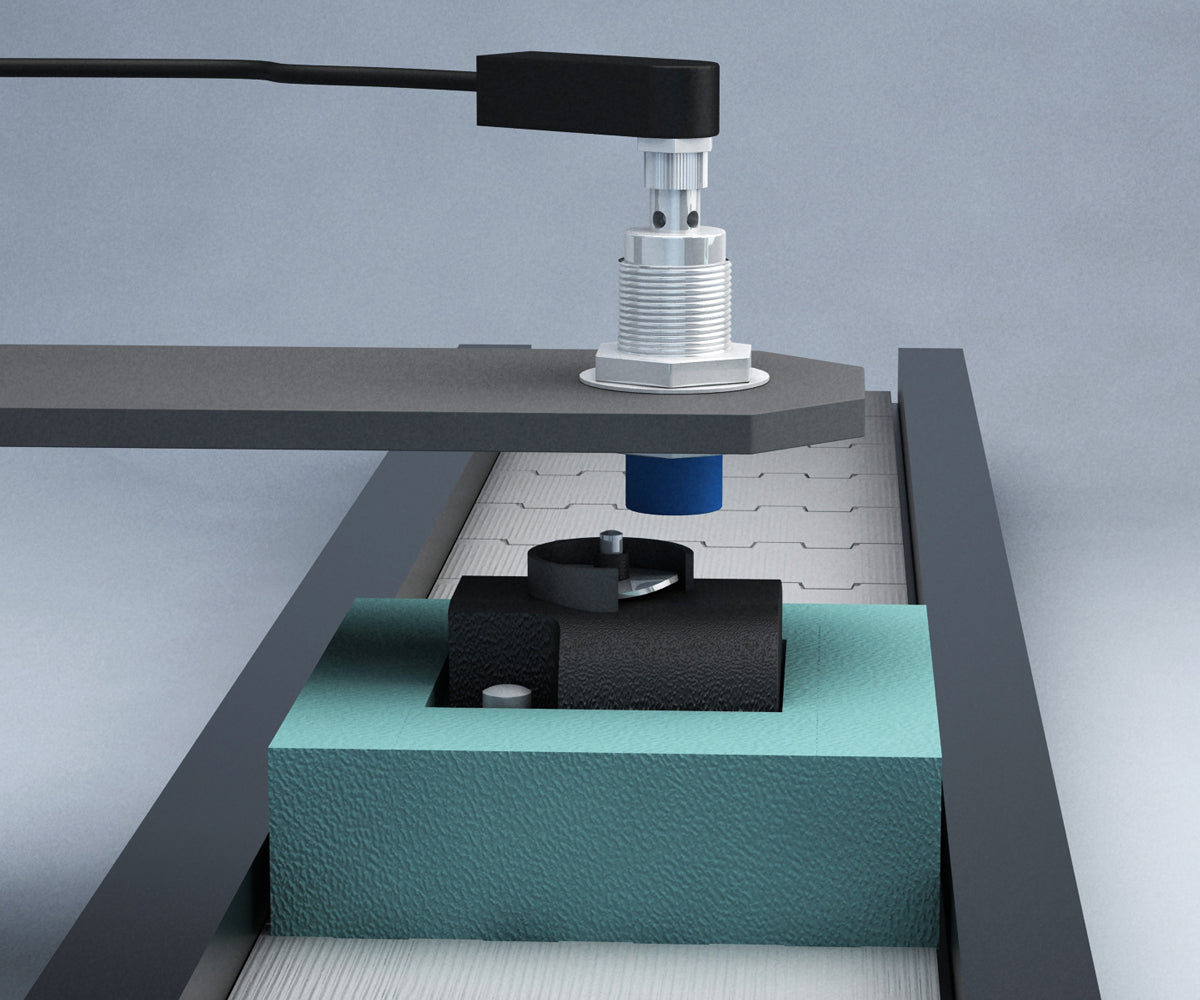Summary
An Indian manufacturer of automotive switches uses inductive sensing to confirm the presence of a dark metal, wave-shaped washer in the switch during automatic assembly. The long operating distance (20 mm) of the sensor used ensures reliable sensing at a safe distance.Customer Values
- Secure sensing distance protects sensor from damage
- Reduction of sensor-dependent downtime
- Reduced reject rate
Specific Product Advantages
- Environmental stability, especially regarding temperature
- Long operating distance (up to 3x standard value)
- Excellent price/performance ratio
Customer Application
The customer is constructing a new automatic assembly line for automotive switches. Within each switch, a wave washer has the function of ensuring a tight mechanical switching action and well sealed assembly. Washer insertion takes place at an early production stage: the third station out of 15 in total. To guarantee end-product quality, the presence of the wave washer must be checked before the workpiece passes to the next station.
Space is limited, so the sensor should be small in size (not more than M18). In addition, the sensor should be mounted at a safe distance from the moving workpiece assembly, so an operating range of 15 to 20 mm is required. The wave-like shape and dark color of the target make it unsuitable for photoelectric sensing. An inductive solution is therefore sought for detection of this metal part.
Customer Solution
A Series 500 sensor meets the requirements of this application. The sensor chosen has a non-embeddable, cylindrical housing size M18 and a 20 mm operating distance. Patented Condist® technology provides excellent sensing stability with respect to environmental influences (especially temperature) and accounts for the longer operating distance of devices with this technology.
The sensor is mounted above the automatic conveyor line with the semi-assembled switches passing below it on workpiece carriers. If the sensor signals a missing wave washer to the control system, stoppers on the conveyor prevent the workpiece carrier from continuing to the next station and a buzzer sounds to alert the operator.
The secure distance of this sensor from the workpiece protects it from damage and avoids a frequent cause of downtime: sensor failure. Its excellent reliability ensures end-product quality and eliminates a potential source of customer complaint.
